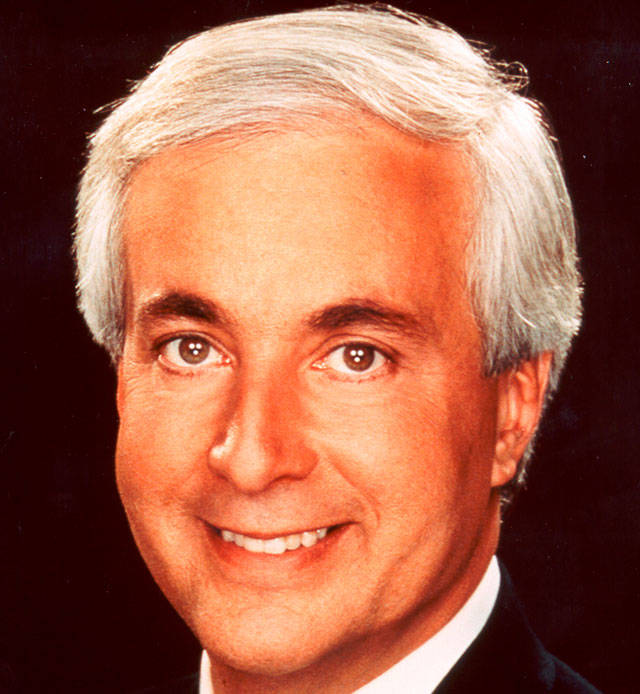Maybe it’s campaign fatigue or the time of year, but TV ratings for the Democrats’ last two debates fell precipitously and the prospects for improvement in the Dec. 19 event are dim. Part of the problem is process. As Republicans learned in 2016, crowded debate stages and uneven moderating are frustrating to viewers — and candidates.
So far this year, nearly 15 hours of debating among Democratic contenders has been largely unsatisfying. It’s a difficult, imperfect process, but it can be better. Here’s how:
• Use fewer moderators. While much is said about the crowd of candidates on stage, little is discussed regarding the number of moderators, which has proved to be a major problem. The first DNC debate back in June had five; last month’s had four, as will the upcoming event in Los Angeles, which makes absolutely no journalistic sense. One or two moderators is ideal, but networks insist on squeezing more into each event simply to showcase their talent.
An analysis of the transcripts shows that bouncing from one questioner to the next invariably means an abrupt change of topic, denying some candidates the opportunity to speak about the most important issues. For instance, when climate change came up last month only five of the 10 candidates were called upon; the topic of paid family leave was discussed by only four. Sen. Cory Booker chided moderators for leaving him out of a discussion about African American voters, noting, “I’ve been one since I was 18.”
The upcoming event will have seven candidates and four moderators. That’s more like a press conference than a debate.
• Allow an undercard. The DNC wisely sought to avoid the mess Republicans created in 2016 when 17 candidates took part in a single debate. But Democrats rejected the GOP’s solution which split the field into upper and lower tiers based on polling, with the lower-ranking candidates having their own separate debate. Although derided by some as a “kiddie table,” the arrangement gave marginal candidates, such as business executive Carly Fiorina, a chance to be heard and climb to the top group.
A debate among second-tier Democrats would be useful. Voters might be interested to hear what recent entrants former Massachusetts Gov. Deval Patrick and former New York City Mayor Michael Bloomberg have to say — and they shouldn’t have to travel to Iowa or New Hampshire to hear them say it. If low ratings are the problem, so what? Run the secondary debate online if necessary, but at least allow it.
• Vary the format. I’d like to see Democrats try a debate in which candidates come on stage one at a time, in an order determined by random draw, with the others waiting backstage in a sound-proof area. Each candidate is given the same three pointed questions concerning, say, tax policy, health care and climate. This approach allows everyone to address the main topics, without benefit of hearing what the others said. The questions should be framed to avoid stock answers. For example, rather than asking, “What should be done about climate change?” the question could be, “Do you favor a tax on carbon, and if so how would you distribute the revenue?”
Once all candidates are on stage, the second segment could be a more free-wheeling discussion in which each candidate is asked about things the others said.
• Dive deeper. Back in August the DNC voted against having any debates devoted to a single issue, a big mistake. If such an approach is too radical for Chairman Tom Perez and his committee, then why not try a debate with each half hour devoted to a major topic. That would allow some depth, force candidates to stay on point, and prevent moderators from drifting into meaningless questions.
In last month’s debate, businessman Andrew Yang was asked: “If elected, what would you say in a phone call to Russian President Vladimir Putin?” Really? Yang got less time than any other candidate and then he’s given that? His quick quip: “I’d say I’m sorry I beat your guy.”
• Try fact-checking. It’s too late to cut the number of moderators for this debate, but how about giving two of them new assignments? Start out with two moderators asking questions and the other two backstage doing fact-checks. For the final half hour these two journalists would come on stage to confront each candidate with their inaccurate or misleading statements.
• Ban Hand-Raising. Granted, raising one’s hand is more polite than raising one’s voice out of turn, but it’s a distraction and candidates should be cautioned against doing it. In the last debate, Sen. Elizabeth Warren was called on to speak five times before three of her competitors had uttered a single word.
Until the general election when debates will be one-on-one, the process will never be perfect. But changes are needed at this stage to help, as pundits like to say, move the needle. On Dec. 19 I’d like each candidate take a crack at this question: What, specifically, should the DNC resolve to do in the New Year to make debates more informative and compelling?
Peter Funt is a writer and speaker. His book, “Cautiously Optimistic,” is available at Amazon.com and CandidCamera.com.




